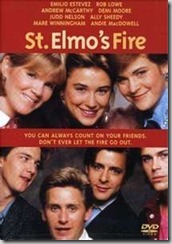The Internet is abuzz about how the much-anticipated and very expensive Ad Bowl fared in Sunday’s big game. Good thing: the game itself was such a blowout it was not one for the ages, so at least we had Bruno Mars and the ads to look forward to. Otherwise, that’s a lot of bean dip and chips that would have gone to waste.
I was underwhelmed by most of the ads this year. They were either retreads of creative ideas that were successful in years past (hello, 2011) or let-downs after weeks of sneak-peek buildup (really, hidden cameras? random celeb cameos? Yawn.) There were cute puppies making friends with Clydesdales that made me tear up (but not buy the beer). There were famous actresses selling homemade soda with the been-there/done-that sex appeal of a GoDaddy gal (again, yawn) but with a new twist of actually laughing at herself a bit (“My real job of saving the world?” Priceless). A little bit of unexpected physical comedy for Greek yogurt.
On the bright side, there was a clever spot from Audi about never compromising (the Doberhuahua). A great one for Goldieblox to encourage little girls to play with more than just princesses and pink (and sponsored by QuickBooks in support of small business – nice touch), And this one for T-Mobile with Tim Tebow putting on a great performance (if only his QB-ing was as good). And I admit I kinda loved this Microsoft ad about how technology has changed lives (so moving).
But it was this campaign from Newcastle Brown Ale that I adored the most. A campaign which poked fun at the “Mega Huge Football Ad Newcastle Never Made.” One ad features a saucy Anna Kendrick, complaining about how Newcastle asked her to do the ad and then they didn’t have the money to make it. If you don’t already love her, you will after you watch this! I loved it because it was inventive, savvy (they took advantage of the Super Bowl hype without the Super Bowl price) and was on-brand for this very down to earth beer. This is how you create buzz, people (over 4 million views for Anna’s ad and counting…)
Still, I’m not sure there are words for this 2-minute epic local ad that only aired in Savannah, Georgia. This guy has cajones, I’ll give him that. And a friend who thinks he’s the next Scorsese. But also kind of reminds me of Guns ‘n Roses November Rain video. I’m not sure I like it but I can’t look away.
What was your favorite (or most hated) ad during the Super Bowl? Please share in the Comments below (and include a link to YouTube if you can!)



